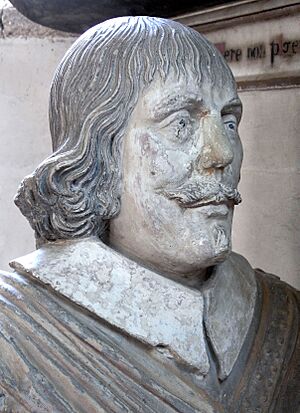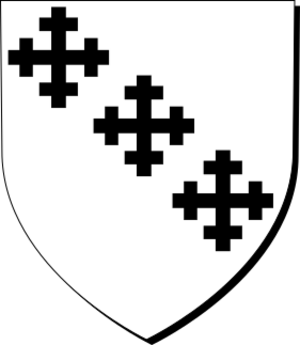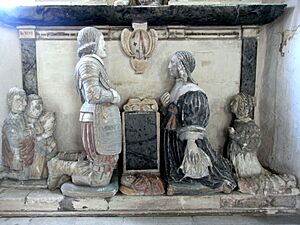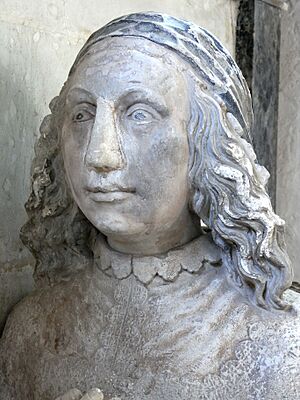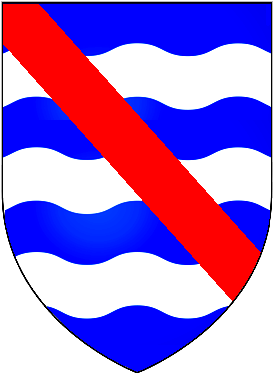Sir John Northcote, 1st Baronet facts for kids
Sir John Northcote, 1st Baronet (1599 – 24 June 1676) was an English politician. He was a member of the House of Commons, which is like today's Parliament. He served there at different times between 1640 and 1676. Sir John was a supporter of the Parliamentarian side during the English Civil War.
Contents
Who Was Sir John Northcote?
Sir John Northcote was the oldest son of John Northcote (1570–1632). His family came from a place called Northcote in Devon, England. They had lived there since the time of the Domesday Book, which was a big survey of England made almost 1000 years ago. Later, in the 1500s, his family became wealthy by trading cloth in a town called Crediton.
Sir John's Early Life and Learning
When he was 16, Sir John started studying at Exeter College, Oxford in 1617. A year later, in 1618, he also became a student at Middle Temple. This was a place where people learned to become lawyers.
Sir John's Political Career
In November 1640, Sir John was chosen to be a Member of Parliament for the area of Ashburton. This was part of a very important Parliament known as the Long Parliament. On 16 July 1641, he was given the special title of a baronet.
Sir John and the English Civil War
When the English Civil War began, Sir John supported Parliament. He had a lot of money and power, and he used it to help their cause. In 1642, he gave £450 to help pay for military actions in Ireland. In June of that year, he promised even more money and soldiers for the war in England.
His support for Parliament was so strong that King Charles I specifically named him when he offered a general pardon in November 1642. This meant Sir John was not included in the pardon. In 1643, Sir John led a group of 1,200 soldiers in Devon. He was captured by the King's forces when Exeter surrendered in September 1643.
Sir John was held prisoner until the autumn of 1644. After he was set free, he went back to Parliament in May 1645. He was later removed from Parliament in 1648 during an event called Pride's Purge. However, he returned to the House of Commons as a Member for Devon during the time of the Protectorate. He spoke often in Parliament during this period.
After the King returned to power, Sir John was elected for both Devon and Helston in 1660. He also served as a Member of Parliament for Barnstaple from 1667 until he passed away.
Sir John's Family Life
Sir John Northcote married Grace Halswell, who passed away in 1675. She was the daughter of Hugh Halswell. Sir John and Grace had a large family with seven sons and four daughters:
- Sir Arthur Northcote, 2nd Baronet (1628–1688), who was their oldest son and took over his father's title.
- John Northcote (born 1629)
- Lewis Northcote
- Hugh Northcote (born 1635), who sadly died when he was young.
- Halswell Northcote (born 1639)
- William I Northcote (1642–3), who also died young.
- William II Northcote (born 1648)
- Susanna Northcote (born 1633)
- Grace I Northcote (1632–1632), who died as a baby.
- Elizabeth Northcote (born 1638)
- Grace II Northcote (1641–1660)


